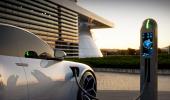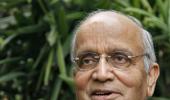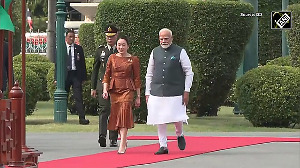So far this year, around 839,545 electric vehicles have been sold, accounting for approximately 6.69% of the total 12,541,684 vehicles sold.

Sales of electric vehicles (EVs) in India saw a sharp 14 per cent decline in June against May's figure, with experts suggesting that it could be due to a combination of factors such as changes in government policies and people's increasing interest towards hybrid vehicles.
The June 2024 sales were over 20 per cent higher when compared to the same month last year, when the sales had dropped due to government tweaks in subsidies.
According to Vahan data from the ministry of road transport and highways, EV sales in June 2024 fell by more than 14 per cent to 106,081 units, compared to 123,704 units sold in May.
It was the lowest sales figure in this calendar year.
So far this year, around 839,545 electric vehicles have been sold, accounting for approximately 6.69 per cent of the total 12,541,684 vehicles sold.
"Low incentives for e2Ws, increasing consumer confidence in hybrids, a lack of robust charging infrastructure, and high EV prices are all impacting EV sales," says Preetesh Singh, specialist CASE and alternate powertrains, NRI Consulting & Solutions.
June has been the worst-performing month for EVs both this year and last year.
However, June 2024 saw a big improvement, with 123,704 units registered, marking a 20.52 per cent increase compared to the 102,645 units registered in June 2023.
Last year, EV sales declined due to the Centre's decision to reduce the maximum subsidy for electric two-wheelers (e2Ws) from approximately Rs 60,000 to around Rs 22,500.
This move led to an increase of more than 20 per cent in the average price of an e2W, which typically ranges from Rs 80,000 to Rs 150,000.
Following the government's decision to cut the subsidy, most original equipment manufacturers (OEMs) had raised their vehicle prices in the first week of June.
This created a significant price gap between green vehicles and petrol-powered ones, thus impacting the purchasing decisions of potential buyers.

Electric two-wheelers (e2Ws) account for 57 per cent of the 839,545 electric vehicles sold overall in 2024. Changes in e2W sales significantly impact the overall sales of the EV category.
And this year, the government further reduced the subsidy by half in April with the introduction of the Rs 500 crore Electric Mobility Promotion Scheme 2024 (EMPS 2024).
Under EMPS 2024, the subsidy cap for electric two-wheelers (e2Ws) is now Rs 10,000 per vehicle, down from Rs 22,500, while for electric three-wheelers (e3Ws), it has been reduced to Rs 50,000 from Rs 111,505.
Both categories will receive incentives of Rs 5,000 per kilowatt-hour (kWh).
Industry executives are concerned that the anticipated increase in sales could be delayed if the government does not extend the deadline of its current Electric Mobility Promotion Scheme 2024 (EMPS 2024) or introduce the third phase of FAME.
"If the government discontinues incentives for the EV industry, sales are likely to decline in the short run, at least until the production-linked incentives scheme for the automobile sector reaches its incentive disbursement stage," said an industry player.
The incentives under the Auto PLI will start from April 1, 2025.
Feature Presentation: Ashish Narsale/Rediff.com












 © 2025
© 2025